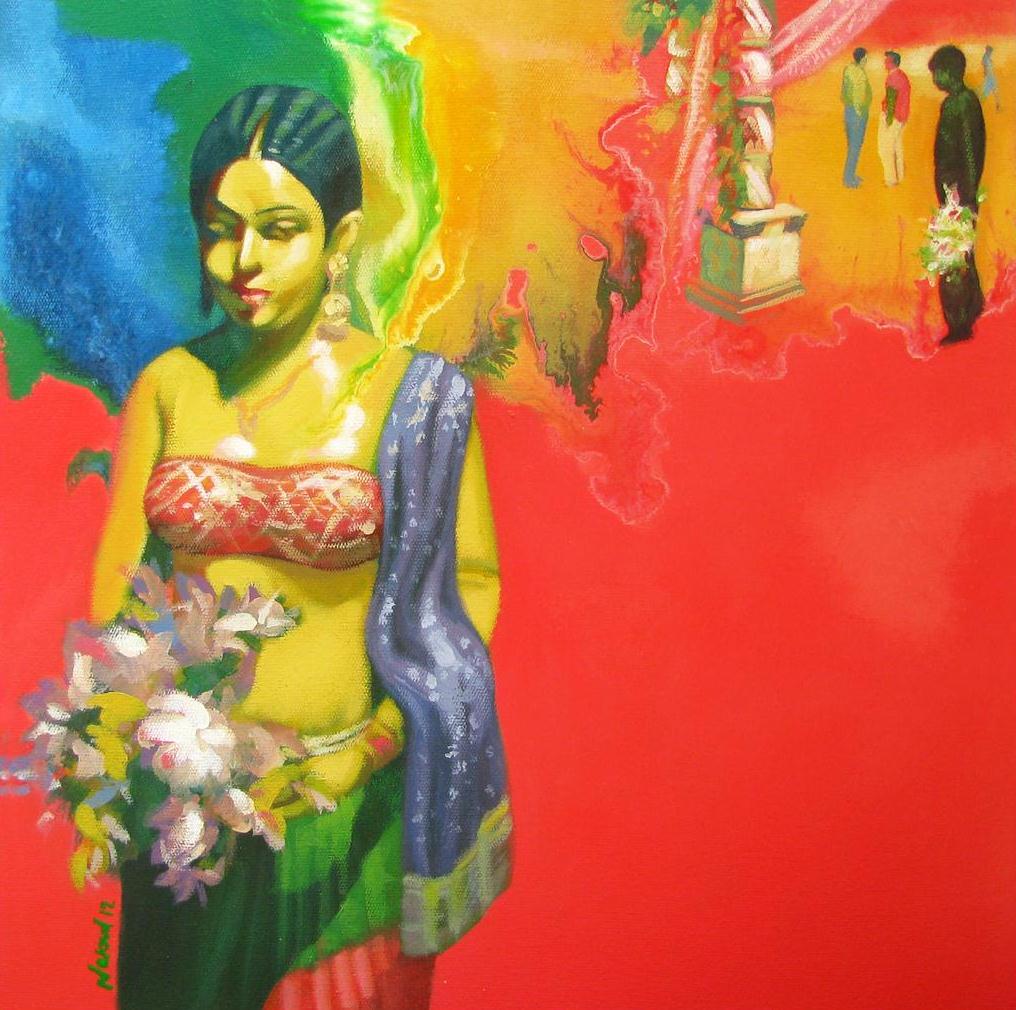Introduction: Why Art Collectors Matter More Than Ever
Art collectors are not just buyers; they are custodians of culture, champions of creativity, and influencers of artistic legacy. From private homes to public institutions, the choices collectors make play a decisive role in shaping the art world—what gets preserved, celebrated, and passed down to future generations.
In recent years, the global art market has seen a growing interest in non-Western art, with Indian artists gaining well-deserved international recognition. As this momentum builds, the role of art collectors—especially those focused on Indian art—has never been more crucial. Their investment not only supports individual artists but also amplifies India’s cultural voice on the world stage.
This guest post explores the evolving landscape of art collecting, focusing on the intersection of discerning patronage and the rise of Indian artists. It offers strategic insights for new and seasoned collectors alike, while highlighting the immense potential of India’s diverse and dynamic art scene.
The Evolution of Art Collecting: From Prestige to Purpose
Historically, art collecting was driven by status, wealth, and aesthetics. Kings and nobles surrounded themselves with commissioned portraits and grand tapestries to signify power. In the modern era, collecting evolved into a more personal pursuit—where emotional connection, intellectual engagement, and cultural responsibility gained importance.
Today’s art collectors are far more diverse in background, motivation, and vision. Some collect to decorate, others to invest, and many to support emerging talent or preserve cultural narratives. With the democratization of art through online platforms, collecting is no longer the domain of the elite; it’s an accessible and deeply rewarding pursuit for anyone with curiosity and appreciation.
Why Indian Artists Are Gaining Global Attention
India’s art landscape is as vast and layered as its history. From the earthy charm of tribal Warli and Madhubani to the contemporary finesse of artists like Jitish Kallat, Subodh Gupta, and Bharti Kher, Indian art blends tradition with innovation in compelling ways.
Several factors are fueling the rise of Indian artists:
-
Global exhibitions and biennales featuring Indian talent.
-
Cross-cultural collaborations and residencies.
-
Increased institutional support through Indian and international museums.
-
Digital galleries like IndianArtIdeas offering global visibility.
For collectors, this presents a unique opportunity: to engage with a culturally rich, globally relevant, and economically promising segment of the art market.
Becoming a Purposeful Art Collector: Actionable Insights
Whether you’re starting your collection or refining it, here are key strategies to navigate the world of art collecting with confidence and purpose:
1. Define Your Vision
Before diving into the market, clarify why you want to collect. Are you building an investment portfolio? Creating a personal art sanctuary? Supporting Indian contemporary talent? Your purpose will guide your choices and bring cohesion to your collection.
2. Do Your Research
Follow Indian art journals, attend exhibitions, read artist biographies, and engage with curators. Understanding the context behind a work—its technique, narrative, and artist’s journey—enhances both appreciation and value.
3. Start with Emerging Artists
Many Indian artists are producing powerful work at accessible prices. Supporting emerging voices not only boosts their career but also allows you to discover hidden gems before they peak in value.
4. Diversify Your Collection
Balance your portfolio by exploring a mix of media (paintings, sculptures, installations), styles (realism to abstraction), and time periods (modern to contemporary). This not only enriches your experience but also reduces market risk.
5. Buy What You Love
While investment potential matters, emotional resonance should never be sidelined. Choose pieces that speak to you—art that evokes, provokes, or brings joy every time you see it.
6. Verify Authenticity and Provenance
Work with reputable galleries, dealers, or platforms like IndianArtIdeas that ensure authenticity, proper documentation, and artist accreditation.
7. Build Relationships
Develop connections with artists, curators, and fellow collectors. These relationships deepen your understanding, keep you informed of trends, and may offer early access to exclusive works.
Collecting Indian Art: A Cultural Responsibility
When you collect Indian art, you are not just acquiring objects—you are preserving traditions, empowering narratives, and contributing to India’s cultural continuity. Every sale supports an ecosystem of artists, artisans, gallerists, and scholars.
Moreover, Indian art is uniquely positioned at the intersection of mythology, identity, modernity, and experimentation. Collectors have the power to spotlight issues—environmental, political, spiritual—that Indian artists explore through their work.
For example:
-
Collecting contemporary reinterpretations of epic myths helps reframe heritage for new generations.
-
Investing in tribal and folk art supports communities and sustains endangered art forms.
-
Showcasing works that address social justice, gender, and climate reflects your values as a collector and global citizen.
Leveraging Digital Platforms: The Future of Art Collecting
Gone are the days when collecting required frequent gallery visits or auction attendance. Online platforms like IndianArtIdeas have made collecting convenient, transparent, and borderless.
Benefits of digital art platforms:
-
Access to curated collections by Indian artists.
-
Artist bios, certifications, and price comparisons at your fingertips.
-
Secure transactions and global shipping options.
-
Tools to visualize artworks in your space before purchase.
As the digital ecosystem grows, so does the community of collectors. Social media, online exhibitions, and virtual art fairs provide dynamic avenues for discovery and connection.
A Word on Art as Investment
While passion should be the primary driver, the financial dimension of art collecting cannot be ignored. Indian art, particularly by modern masters and rising contemporary stars, is increasingly sought after in the secondary market and auction houses.
To approach art as an investment:
-
Study market trends and auction results.
-
Seek expert guidance for high-value acquisitions.
-
Focus on rarity, demand, and artist trajectory.
-
Document your purchases and maintain care standards for appreciation in value.
That said, the most enduring “return on investment” is not monetary—it’s the cultural capital and personal enrichment art brings.
Conclusion: Curating Tomorrow’s Cultural Landscape
Art collectors are not mere buyers; they are storytellers, visionaries, and enablers of artistic evolution. In the context of Indian art, collectors hold the power to nurture a global appreciation for India’s diverse voices and visual traditions.
By collecting with purpose—whether to uplift emerging talent, preserve regional art forms, or engage with critical contemporary themes—you become an active participant in shaping the future of art in India and beyond.
So, the next time you view a piece that stirs your soul, don’t just admire it—acquire it. In doing so, you’ll not only own a work of art but also a piece of history, culture, and future possibility.









